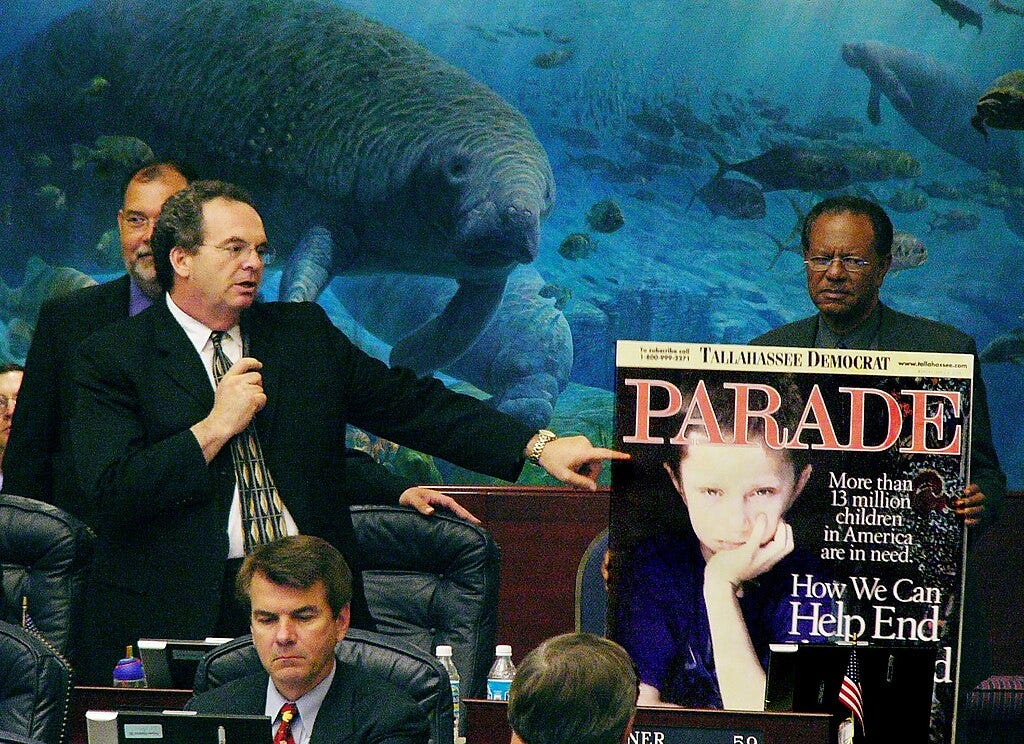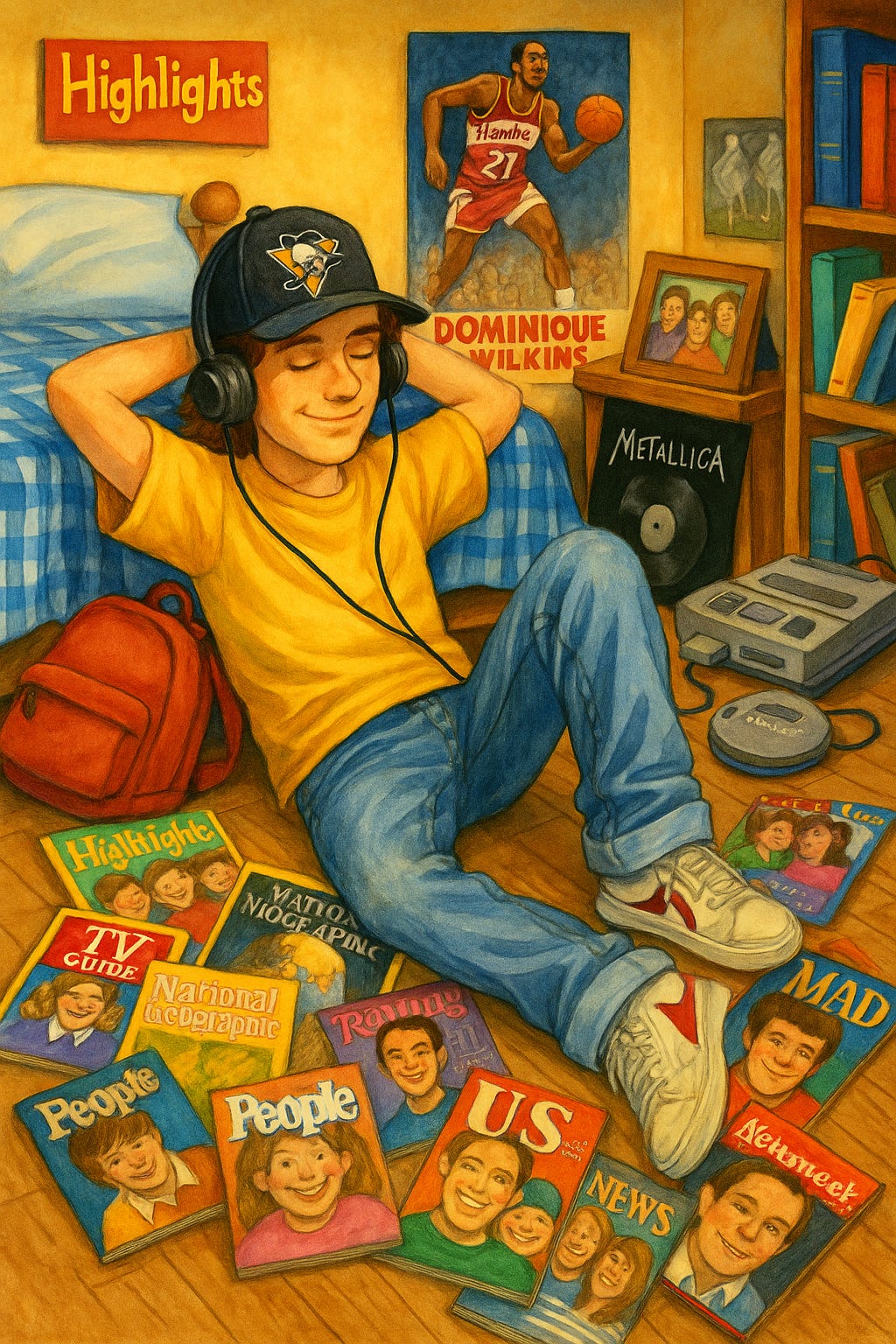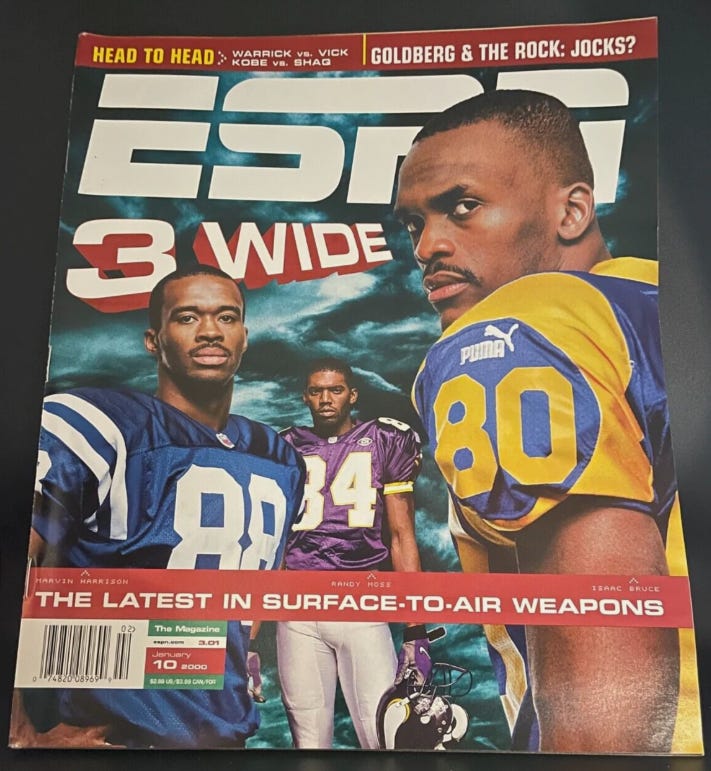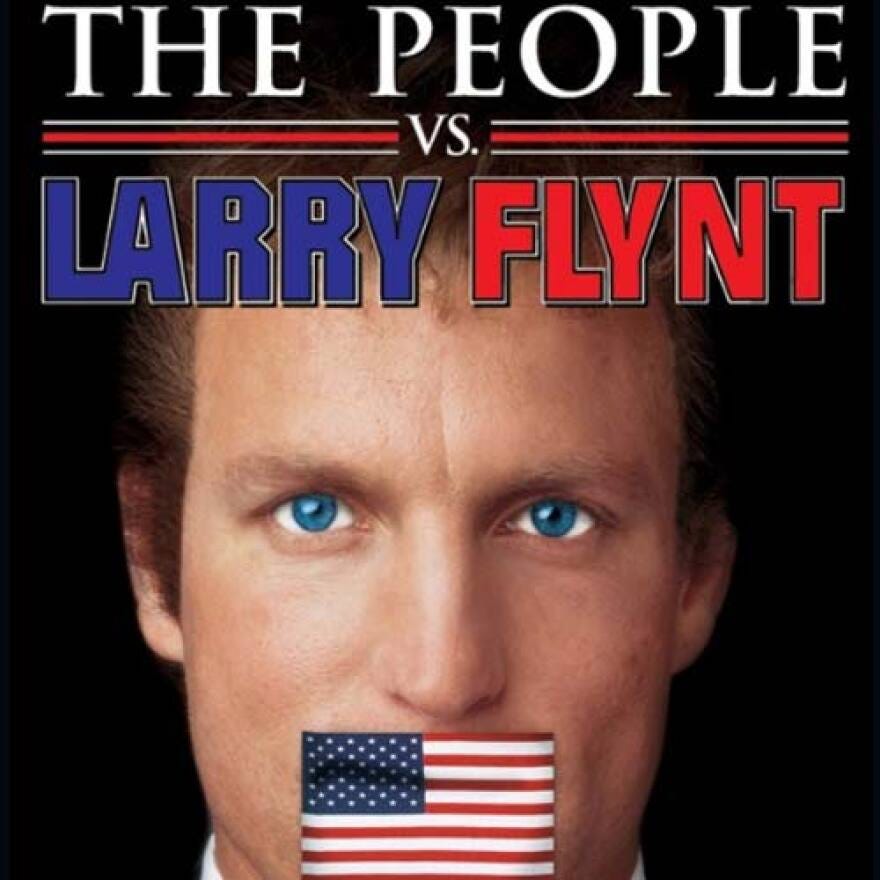Hey friends! Just wanna say how much I appreciate you reading when there are more options than ever. If you like this one, please give it a like, which helps other interested people find it too. I love writing, but connecting with others through written words is even better, so leave a comment and tell me about your favorite magazine memories. Or just tell me how wrong I am :)
On a breezy, summer day, you run to the mailbox, eager to collect the mail. Today is the day, you think to yourself with a grin. Your favorite magazine arrives.
Too. Rad.
You race back inside, chuck the boring mail on the counter, and plop on your bed to devour the latest edition. The cover pops with color and promises. You hold the pages close to your face, hoping to detect a faint trace of new magazine smell. You steady yourself and carefully turn the first page.
Some people start on the inside cover and methodically work through page by page, allowing the editor’s letter to frame up the issue. Many people hit the table of contents and get straight to the story they’ve been dying to read.
Fine for them. To quote Stevie Nicks, “You can go your own way.”
You have your own way. You work through the features and interviews. There’s always interviews, after all. Anyone who ever started a magazine did so to interview people they wanted to meet. But it’s the pictures and art. Someone made this just for you. You imagine grabbing your scissors and cutting out the perfect parts, just so, to tape and paste and flaunt.
It’s gonna be epic.
Unlike today’s infinite scroll, a magazine ended, signaling a pause, a chance to reflect.
Magazines: Those Glossy Piles of the Past
Back in the day, magazines were how normal people learned about the world. They came in only one shape (rectangle) but in many forms.
There were Newsweek and Time, which tried very hard to make global events understandable by putting words like “geopolitical” next to pictures of Henry Kissinger.
Then there were People and Us Weekly, which made sure you knew which celebrities were “just like us,” by showing them buying avocados or bravely walking outside without makeup. Just like us, only richer and bronzed.
We used to stack magazines in our homes for good reason, and that reason was to feel smart. Never mind the stack was entirely back issues of Cat Fancy. Some people even had subscriptions to Reader’s Digest, which was basically Twitter for your grandparents: lots of short pieces, attempts at humor, sometimes terrifying, and always ending with a quiz about things you might’ve learned during the Eisenhower administration.
Your magazine sub list was part of your identity. Eventually we morphed into what websites we followed, which gave way to social media accounts, but that’s digital.
Print was tangible, visible. You could be a poser just by deciding what magazine cover stuck out of your backpack or collected dust on that magazine holder in the bathroom. Everyone used to know a septuagenarian with a thirty year old copy of Vanity Fair next to their toilet.
We used to stack magazines in our homes for good reason, and that reason was to feel smart.
Glossing Over Your Life
Magazines acted like a printed soundtrack1 to your life. You grew in and out of publications at various life stages. Here’s a quick overview of my personal magazine evolution.
Highlights. It was just ground zero for getting kids hooked on the form and parents dishing out dough.
I graduated to TV Guide like any self-respecting xennial. Imagine needing a miniature magazine to tell you what would be on television and when. Every time slot for the week was detailed, but the covers were big draws.
National Geographic was always around, but we all knew no one had ever actually read a full article of that dense text since some explorer in the 1920s who was featured.
All the sports mags. I was a kid from Pittsburgh, after all. Sports Illustrated (SI) was king, of course. I never missed “The Life of Reilly” column by Rick Reilly, who was one of my early literary heroes. I can’t explain the delight of getting a new copy in the mail on a lazy summer day, then feverishly flipping to the back page to read the best opinion writer in sports media during that era.
The first time I was technically published in a popular magazine was my letter to the editor in a January 2000 issue of ESPN The Magazine. I was defending hockey legend Mario Lemieux’s honor, as one does. They must’ve printed our email addresses at the time because I vaguely recall hurting some guy’s feelings during an email exchange. Guess he shouldn’t have been writing letters to the editor if he wasn’t ready for a public takedown. But hey, we didn’t have social media to hide behind.2 You had to put your name and email address behind those opinions.
Rolling Stone and SPIN? I did not appreciate them enough. Well, there was that one article about Janet Jackson I read as if I had to dismantle a nuclear bomb, and it was the directions.
As an evangelical Christian school kid, I wasn’t allowed to have normal things like popular magazines out in the open, so I subscribed to Heaven’s Metal instead. Miraculously, HM is still going in web form if my Googling eyes are to be believed. I do recall editor-in-chief Doug Van Pelt getting a Dave Mustaine interview back in the day, which was about the only time I was allowed to openly read about Megadeth, one of my favorite bands at the time.
MAD and Spy are huge holes on my list. I was so far away from understanding who I was (or being allowed to be who I was). These would’ve been staples in my existence otherwise. If I had read these during high school I might’ve set off for college committed to becoming a writer from day one.
And sure, there’s coming-of-age magazines—Tiger Beat, Bop, swimsuit issues, Maxim, Playboy, etc—which make for funny stories,3 but this article’s getting long. Teens learned about the world, life, and sexuality only through magazines in many cases. There weren’t always other options.
Some of the most outlandish publications had major social impacts. Larry Flynt of Hustler took on Jerry Falwell’s immoral majority and became an unlikely defender of the 1st Amendment.4
The short-lived Sassy challenged the staid, traditional approach of stalwarts like Seventeen and Glamour. Sassy got real and paid the price for it. By talking about real issues like teenage sex, they faced boycotts from the religious right and lost advertising dollars. No matter they were giving young people a safe outlet to learn about navigating social pressures around sex and other important topics like HIV/AIDS. You just couldn’t go around saying S-E-X for golly sake. Sassy had to thread a tricky needle between outraged evangelicals and second-wave feminists.
Obviously, my upbringing was super white and sheltered, so I didn’t know about mags discussing LGBTQ+ culture or African-American pubs such as the historically significant Jet magazine. The cultural blinders were real.
Do Tabloids Count?
We haven’t even touched on tabloids yet.
By definition, tabloids are newspapers with pages half the size of those of a standard newspaper. But they lived on the magazine rack, and it’s my column, so I can do what I want.5
National Enquirer always made the headlines. Well, literally, duh. Celebrity scandals back then were known by every single person who stood in line at a grocery store, which was basically everyone. And they all talked about who was shtupping whom. The mission of the Enquirer, best as I recall, was to show the worst photo possible of every famous person, just stopping short of digging up celebrity corpses to take Polaroids. Then again, they did run images of JFK’s autopsy the second the pictures were declassified, so even corpses were okay as cover models.6
Of course, no one could out-headline the bonkers covers of The Weekly World News, which claimed such cover stories as “Bat Boy Found in Cave!”, “Alien Backs Clinton for President!”, and “Saddam Hussein Has a Merman Love Child!”7 Back then, we could look at such insane stories and chuckle at how people could make up anything. You probably recognize the moderns descendants of The Weekly World News as mostly things MAGA Republicans and Fox News hosts now say.8 But somewhere along the way, people forgot to laugh at stuff that was clearly made up.9
Before my teaching career, I actually served as head editor for a tabloid called the Pittsburgh E Resource. We put out two issues a month all over the tri-state area. I wrangled columnists, edited tons of pieces, and wrote gobs of ad copy. My eduClaytion brand was born there. My friend Bill anonymously wrote a column called “The Man Behind The Curtain.” I wish I could read all those, but a spiteful villain from my past decided to burn the banker’s box that contained my entire collection.
Tabloids are typically popular in style and dominated by headlines, photographs, and sensational stories. So they might not be magazines, technically, but if that description doesn’t explain how we ended up with millions of morons on Facebook believing Hillary was carrying Putin’s lovechild, then I don’t know what does.

The Medium was the Message
Magazines, as a medium, shaped not just what people thought, but how they thought. They were glossy, curated, and cyclical, inviting people into a shared cultural rhythm. Weekly or monthly issues created a pulse for public conversation, making information feel authoritative and timely.
Magazines were…
Tactile and personal: You held them, dog-eared them, left them in waiting rooms.
A blend of images and words: Imagine today’s digital feed but with editorial curation rather than algorithmic chaos.
Linear and finite: Unlike today’s infinite scroll, a magazine ended, signaling a pause, a chance to reflect.
But hey, the days of a monoculture are long gone. And good riddance to the worst parts. One unfortunate side effect of losing a monoculture is the disappearance of a distinctive counterculture.
There used to be a magazine for everything. A niche mag was the social watering hole for that thing. Fans didn’t have options for where they went to learn about their favorite people, places, and things. You couldn’t help but form community.
Everything is niche today, but in a much more fragmented way. You don’t even have to follow a particular website or social account now because the algorithm feeds you whatever your interested in across a variety of Johnny-come-lately creators.
Still, we’ll always have memories of flipping pages, tearing out perfume samples that made the whole house smell like a French nightclub, and circling things in SkyMall magazine we fully intended to buy, like a combination barbecue grill and medieval suit of armor.
Magazines may be fading, but they gave us something TikTok never will: papercuts and the lingering hope that someone, somewhere, was still reading your letter to the editor.
Reading lists didn’t sound as cool as printed soundtracks.
Hell, we had barely survived Y2K when we didn’t know if the world was gonna end because of the internet lol.
I mean Kirk Cameron was a teen idol for God’s sake.
Go watch The People vs. Larry Flynt immediately if you have not.
Of course, feel free to Buy Me A Coffee and thereby earn the right to tell me what to write. I will totally shill for the right price, which is anything.
Globe also ran the photos, but that rag did loads of heinous shit. I’d love for them to stay relegated here, a footnote to history. In a just world, disgusting people with zero scruples would not get rich or famous. Unfortunately, in the past decade, we’ve got to see what would happen if the kinds of people who run Globe also got to run the U.S.
That sentence has entirely too much punctuation for me to check how it’s supposed to work.
Back in the day, we had MAGAzines. Today, we just have MAGA memes. Magazines taught us to think. MAGA taught us not to.
And is it surprising that the rise in American stupidity is inversely proportional to the decline of magazines?







Thank you for this whistle-stop tour of so many periodicals I had forgotten even existed! My sub list before I gave them all up was Car & Driver (‘cuz I loved me some 0-60 tables), National Geographic (‘cuz I loved me some dense serif-font text), and Cosmopolitan (because I… well there’s no good excuse for this one really 🤭).
We didn't have the internet in prison. Magazines saved my life!
https://fromtheyardtothearthouse.substack.com/p/possessor